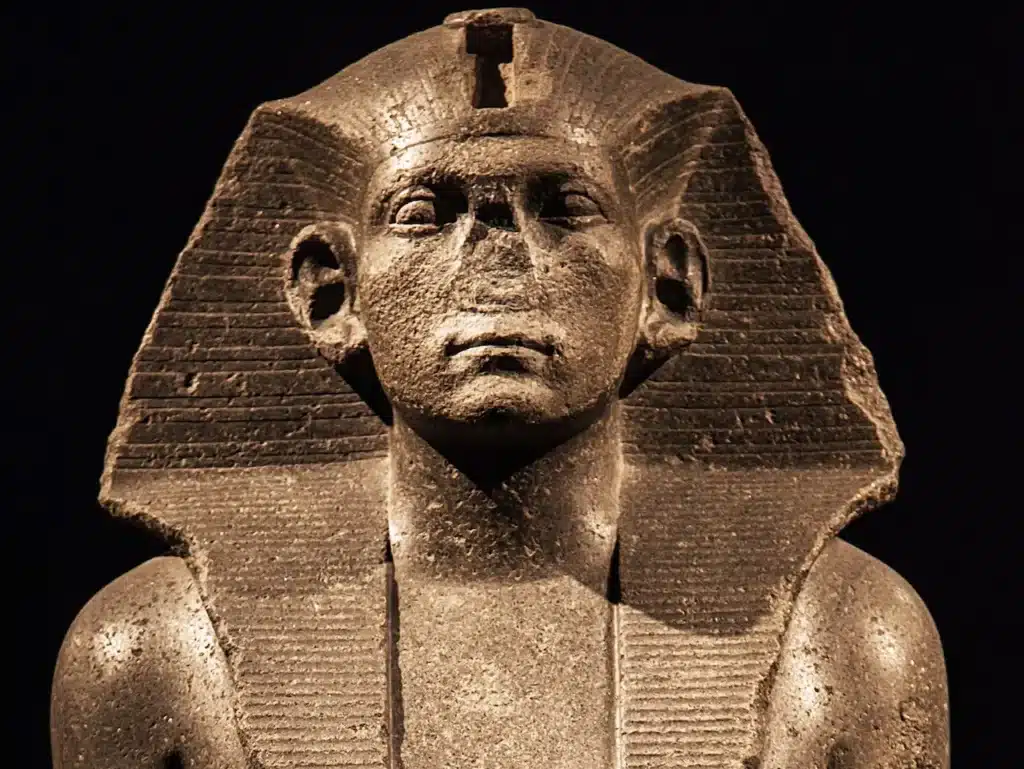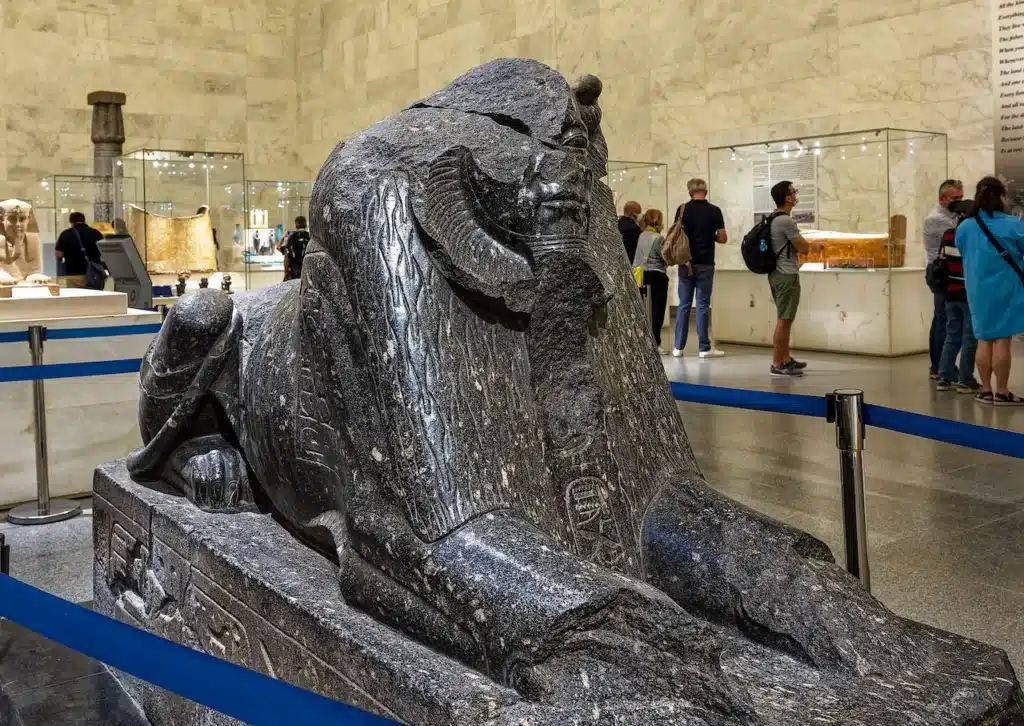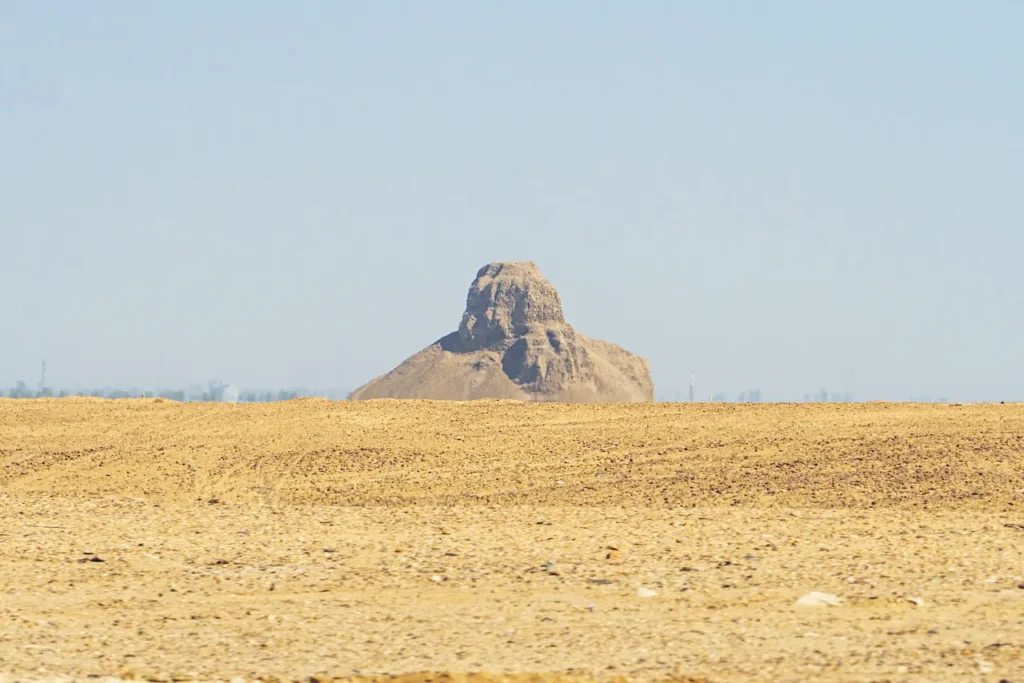How did ancient thieves rob the treasures of Pharaoh Amenemhat III – one of Egypt’s wealthiest rulers – from Hawara, the so-called “Fort Knox” of Egyptian pyramids? The crime was committed more than 3,700 years ago and remains one of the greatest mysteries in history. Despite the pharaoh’s efforts to secure his tomb with ingenious defences, labyrinthine corridors, colossal stone portcullises, and hidden chambers, the pyramid was robbed of its riches. Historians have been baffled for years by the vanishing treasures of Hawara.
After centuries of speculations, new insights are beginning to emerge. What kind of men could dare to steal a king’s resting place from the eternal? How could these men have committed such a massive theft in a time of close-knit community and strict religious beliefs? What happened to the stolen fortunes?
For a better understanding of this ancient crime, let’s revisit Amenemhat III’s reign. He was Egypt’s greatest ruler at the time and built Hawara fortress’s secure walls.

The Discovery of Treasures of Hawara
Flinders Petrie, a famous Victorian archaeologist, stood before the burial chamber of King Amenemhat III in 1888. He was the most powerful ruler of Egypt’s Middle Kingdom. Petrie spent an exhausting year excavating Hawara’s pyramid, hoping that it would help cement his legacy or even make him rich. Amenemhat III wasn’t just any king. His 46-year reign was one of unprecedented prosperity and peace, and he had amassed a wealth of riches.
When Petrie finally peered through the sealed door and into the inner sanctuary, his heart dropped. The burial chamber was empty. The treasures, including gold, jewellery and ceremonial artifacts, were all gone. The fearless thieves had left no trace behind. Someone had pulled off the “heist of the millennium.”
King Amenemhat III
Amenemhat III presided over an era of great stability. He is often considered the greatest ruler of the Middle Kingdom (1855-1808 BCE). Egypt underwent a period of significant agricultural expansion and engineering feats, including the Faiyum irrigation systems, while accumulating vast wealth in the royal Treasury. The complex of his mortuary at Hawara served as both his final resting spot and a fortress to protect grave robbers.
The Labyrinth of Hawara was a monumental structure that Herodotus, the Greek historian, later said surpassed even the Egyptian pyramids in its grandeur. Amenemhat’s architects must have believed that their design would deter even the most determined tomb raiders.

The Burial Chamber Amenemhat III
King Amenemhat is often considered Egypt’s most powerful and accomplished ruler. His 46-year rule, which began during a time of relative stability and peace, brought unprecedented prosperity, innovation, and peace to Egypt. Egypt prospered like never before under his leadership. Through agricultural reforms, barren lands became fertile and Egypt’s influence grew far beyond its borders. The construction of dams and canals, as well as other engineering feats, ensured that the Nile would continue to provide life-giving water for generations to come. Amenemhat III amassed an immense amount of wealth by the end of his reign. His treasury was filled with gold, precious gemstones, fine linens and sacred artifacts.
Amenemhat, like all Ancient Egyptians, believed in the promise that the afterlife would be a good place to live. Amenemhat III believed that securing the riches of his tomb was more than just vanity. It was vital for his safe passage to eternity, and the preservation of Ma’at – the divine balance which held Egyptian society together. It was more than just a tomb; it was to be his eternal palace. A sacred vault, where his soul could continue to oversee his people. Amenemhat, to protect his treasures against tomb robbers who were always present, commissioned the construction at Hawara of the pyramid, which is an engineering marvel and the most complex secure tomb ever constructed.
The entrance to the tomb was cleverly concealed beneath stone slabs. It led into a labyrinthine maze of twisting passages and false corridors that were designed to confuse intruders and trap them. Massive portcullises weighing hundreds of tons were constructed to seal off the entrance. Meanwhile, massive sliding doors protected the burial chamber, and their weight made them appear immovable. Amenemhat III was confident that these elaborate defences would protect his body, wealth and well-being for his people.

The Heist in the Ancient World
Someone pulled off the biggest heist in ancient history. It was a theft that was so fearless and executed with such perfection that it left no traces behind. Archaeologists have been puzzled for centuries by the theft of Pharaoh Amenemhat III’s incomparable wealth from Hawara’s secure Pyramid. Nobody has been able to solve the mystery until now.
A team of experts from the modern era was assembled to reopen an old cold case that dated back 3,700 years. Together, they discovered startling insights about one of history’s most unsolved cases. Each team member had a special skill that helped solve a particular part of the case. A crime consultant reconstructed the mindset of ancient thieves with forensic precision, determining their likely motivations and tactics.
Egyptologists have revealed new perspectives about life in the Middle Kingdom. They discovered how deeply ingrained religions may have shaped the elaborate tomb defences as well as their ultimate desecration. An engineer also solved the mystery of how the robbers were able to avoid colossal stones weighing up to 18 tons without leaving a trace.
It’s not the story about kings or gods. This is the story of men who risked everything to gain unimaginable riches. How could they pull off a theft of this magnitude and remain undetected at a time when Egyptian communities were small, gossipy and full of intrigue? They could have managed to escape with their life and their loot. What happened to the treasures that were stolen?
The Egyptian Job is a fast-paced, gripping ancient thriller. This team assembles clues, reconstructs a crime and reimagines one of history’s most daring crimes.




